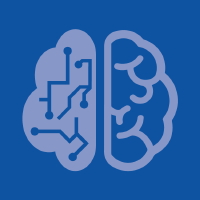Topic Menu
► Topic MenuTopic Editors



Applied Computer Vision and Pattern Recognition
Topic Information
Dear Colleagues,
Computer vision is a field of artificial intelligence that trains computers to interpret and understand the visual world. Computer vision tasks include methods for acquiring digital images (through image sensors), image processing, and image analysis to reach an understanding of digital images. In general, it deals with the extraction of high-dimensional data from the real world in order to produce numerical or symbolic information that the computer can interpret. For interpretation, computer vision is closely related to pattern recognition.
Indeed, pattern recognition is the process of recognizing patterns by using machine learning algorithms. Pattern recognition can be defined as the identification and classification of meaningful patterns of data based on the extraction and comparison of the characteristic properties or features of the data. Pattern recognition is a very important area of research and application, underpinning developments in related fields such as computer vision, image processing, text and document analysis and neural networks. It is closely related to machine learning and finds applications in rapidly emerging areas such as biometrics, bioinformatics, multimedia data analysis and, more recently, data science.
The Applied Computer Vision and Pattern Recognition topic invites papers on theoretical and applied issues including, but not limited to, the following:
- Statistical, structural and syntactic pattern recognition;
- Neural networks, machine learning and deep learning;
- Computer vision, robot vision and machine vision;
- Multimedia systems and multimedia content;
- Bio-signal processing, speech processing, image processing and video processing;
- Data mining, information retrieval, big data and business intelligence.
This topic will present the results of research describing recent advances in both the computer vision and the pattern recognition fields.
Prof. Dr. Antonio Fernández-Caballero
Prof. Dr. Byung-Gyu Kim
Prof. Dr. Hugo Pedro Proença
Topic Editors
Keywords
- pattern recognition
- neural networks, machine learning
- deep learning, artificial intelligence
- computer vision
- multimedia
- data mining
- signal processing
- image processing
Participating Journals
| Journal Name | Impact Factor | CiteScore | Launched Year | First Decision (median) | APC |
|---|---|---|---|---|---|

Applied Sciences
|
2.5 | 5.3 | 2011 | 17.8 Days | CHF 2400 |

AI
|
3.1 | 7.2 | 2020 | 17.6 Days | CHF 1600 |

Big Data and Cognitive Computing
|
3.7 | 7.1 | 2017 | 18 Days | CHF 1800 |

Mathematical and Computational Applications
|
1.9 | - | 1996 | 28.8 Days | CHF 1400 |

Machine Learning and Knowledge Extraction
|
4.0 | 6.3 | 2019 | 27.1 Days | CHF 1800 |

MDPI Topics is cooperating with Preprints.org and has built a direct connection between MDPI journals and Preprints.org. Authors are encouraged to enjoy the benefits by posting a preprint at Preprints.org prior to publication:
- Immediately share your ideas ahead of publication and establish your research priority;
- Protect your idea from being stolen with this time-stamped preprint article;
- Enhance the exposure and impact of your research;
- Receive feedback from your peers in advance;
- Have it indexed in Web of Science (Preprint Citation Index), Google Scholar, Crossref, SHARE, PrePubMed, Scilit and Europe PMC.

